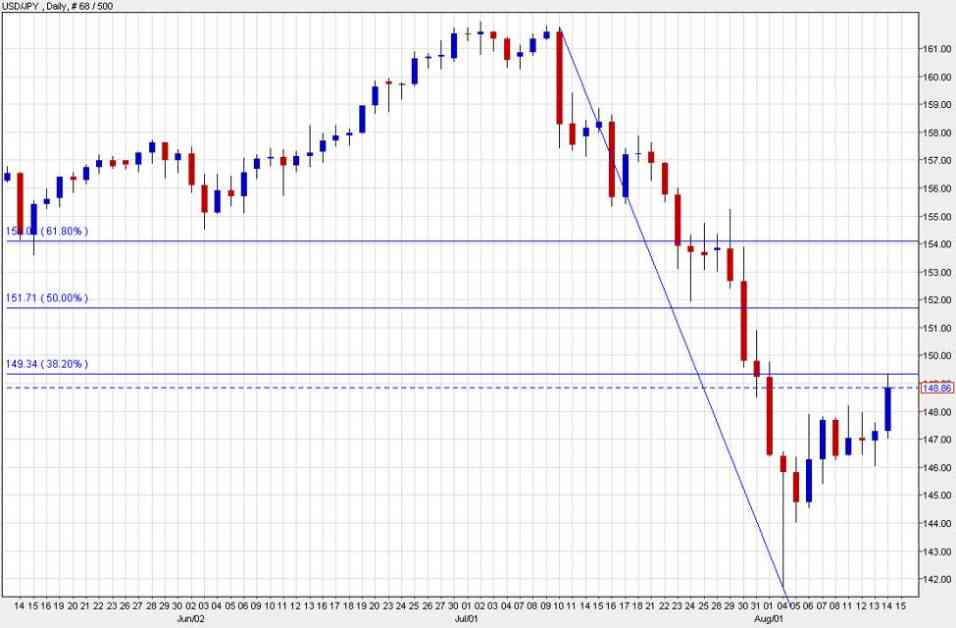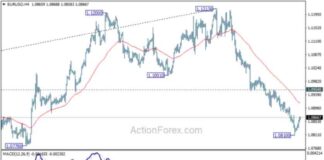USD/JPY Retraces to 38.2% Fibonacci Level and Stalls: A Detailed Analysis
The USD/JPY pair experienced a significant surge following stronger US retail sales data, but the momentum came to a halt as it reached a crucial technical level. The pair reached a high of 149.32, just two pips away from the 38.2% retracement level of the downward move from 161.80 to 141.67. This Fibonacci level has acted as a key resistance point, causing the pair to retreat back to 148.96. The market’s reaction at this level is not surprising, as it is a common area for price consolidation after a rapid decline.
Technical Analysis: Fibonacci Levels and Market Dynamics
Fibonacci retracement levels are widely used by traders to identify potential support and resistance levels in financial markets. The 38.2% level is considered a moderate retracement level, and traders often look for confirmation of a break above or below this level to determine the next directional move. In the case of USD/JPY, a clear break above the 38.2% Fibonacci level could pave the way for a further rally towards 151.71 and potentially 154.09.
Market Sentiment and Fundamental Factors
While technical analysis provides valuable insights into price movements, fundamental factors also play a crucial role in shaping market sentiment. In the case of USD/JPY, the bond market has been a key driver of price action. This week, US 2-year yields remained subdued despite the strong performance of equities. However, a notable increase of 15 basis points to 4.09% in US 2-year yields today suggests a shift in market dynamics.
The rise in bond yields is a positive sign for carry trades like USD/JPY, as higher yields attract investors seeking yield differentials. A sustained increase in US bond yields could provide further support for the USD/JPY pair, potentially leading to a breakout above the 38.2% Fibonacci level.
Risks and Considerations: Geopolitical Events and Economic Data
While technical and fundamental factors are important considerations in trading the USD/JPY pair, it is essential to monitor geopolitical events and economic data releases that could impact market dynamics. Geopolitical tensions, trade disputes, and economic indicators such as GDP growth, inflation, and employment data can all influence the direction of the currency pair.
Traders should also be mindful of central bank policies, particularly the Federal Reserve and the Bank of Japan, as their monetary policy decisions can have a significant impact on exchange rates. Any surprises in central bank announcements or economic data releases could lead to volatile price movements in the USD/JPY pair.
Conclusion: Navigating the USD/JPY Market
In conclusion, the USD/JPY pair’s retracement to the 38.2% Fibonacci level highlights the importance of technical analysis in identifying key support and resistance levels. While the market has stalled at this level, a decisive break above could signal further upside potential for the pair.
Fundamental factors, such as changes in bond yields and market sentiment, also play a crucial role in shaping the direction of the USD/JPY pair. Traders should remain vigilant of geopolitical events, economic data releases, and central bank policies to navigate the complexities of the currency market effectively.
Overall, a comprehensive approach that combines technical analysis with an understanding of market dynamics and fundamental factors is essential for successful trading in the USD/JPY market. By staying informed and adapting to changing market conditions, traders can position themselves strategically to capitalize on opportunities in the dynamic foreign exchange market.

















